Tucked away in a remote corner of Tasmania, beyond the reach of paved roads, is a “cool” cave full of natural wonders displayed during an eerie cave tour, with great bonuses thrown in – nature walks, thermal springs and an invigorating swimming pool.
We present – Hastings Caves and Thermal Springs.
Hastings Caves and Thermal Springs are located in the far south of Tasmania’s amazing Huon Valley. It is a long, 90-minute drive from Hobart – the closest big city.
We were based at a small village called Snug, about half hour drive south of Hobart. That helped with lesser driving time and traffic to the caves. It was still a 60-minute drive.
The drive was actually very pleasant because we passed through the picturesque Huon valley. This beautiful corner of Tasmania (called the Southern Edge) has some very lovely scenery, and there are charming places to stop for a coffee on the way.
One such place is Huonville, a small town by the Huon River in the heart of Tasmania’s apple growing region. Geeveston, featuring some very tall trees, is close to the Hartz Mountains national park. There are many waterfalls and mountain trails nearby, but the roads to these places are rough and unsealed and it is advisable to have a 4WD, as well as another car for company.
The Hastings cave lies within the Hastings Cave State Reserve, almost at the southern tip of Tasmania.
The landscape is typical “Karst”. Over millions of years, acid rain has dissolved the bedrock (limestone, marble and gypsum) to create sinking streams, sinkholes, caves, springs and other features. The foliage is typical of a temperate rainforest with many eucalyptus trees.
To reach the cave you have to leave the main road and drive 5 km on an unsealed road (ok for saloon cars) to reach the Visitors centre, behind which are the thermal springs and swimming pool. It is a spacious building with a café serving beverages and light snacks, a nice gift shop, and friendly staff explaining the details about the tour. You need to buy your tickets for the cave tour, which could start about 45-60 minutes from the time you get your tickets. Then, you need to drive another 5 km to the parking lot at the cave.
From there, you take a boardwalk to cross a hot springs creek, followed by a scenic path through a dense rainforest with wild ferns and moss laden tall trees, to reach the cave entrance. On the way you will see informative hand carved wooden signboards about loggers’ history and springs. If you like, you can also take a short forest walk through boardwalks and forest paths to the cave entrance.
At the cave entrance, you have to wait while the guides form groups to 15-20 people. A quick briefing and overview, some instructions, and you enter the cave for the 45 minute cave tour.
INSIDE HASTINGS CAVES
When we had said that it is a “cool” cave, we did mean it in a literal sense as well. The temperature inside the cave was 9 degrees Centigrade when we visited the place in April. Warm clothes and sturdy shoes are needed.
As you climb down the first flight of stairs into the cave and your eyes get accustomed to the blend of pitch darkness and powerful electric lights, the first thing that you will notice are the abundance of “mites and tites’ – I mean stalagmites and stalactites.
You may know the old wisecrack about how to tell a ‘mite from a ‘tite, don’t you? It’s like ants in the pants – the mites go up and the tites come down.
Raindrops pick up carbon dioxide from the air, forming a very weak acid, before falling to the ground. If the ground is limestone, the acid dissolves the rock, creates cracks, and seeps through. When the water reaches a cavity, e.g. a cave, it releases the carbon dioxide, and the water droplet falls to the ground, leaving a tiny particle of rock which forms a stalactite over millions of years. The droplet may still have a tiny bit of dissolved rock left in it when it reaches the ground, and this rock gradually forms a stalagmite.
The tour takes you up and down endless flights of stairs (supposedly 250 each way) as you traverse through the cave gazing at the wondrous sights all around you. The guide keeps giving you short descriptions on the history, background and some geology too.
The guide will point out the incredible subterranean formations in this Dolomite cave – including stalactites, stalagmites, vertical columns, big flowstones, many thin straws and the unusual helictites.
The cave goes on changing gradually and new formations are forever developing. The guide pointed out to one of them that was over 75,000 years old! The guides are very knowledgeable and respond to all questions from the visitors.
There are photo ops aplenty, because everywhere you look you will find something amazing, both in colour and shape. The only difficulty is to figure out which shots will look great because what you see cannot always be captured through a camera lens.
The cave walk continues for about 2 kms, up and down stairs and through a few tight tunnels and gaps. There are some wide-open amphitheatres and paths with steps and many with handrails.
At one point, the lights are turned off for a while (called ‘blackout’) to get a feel of the cave. We could just hear the water dripping! Thankfully there were no bats!
When the tour ends, you can spend some time admiring the rainforest area and then get back to your car to return to the visitor centre.
THERMAL SPRINGS AND POOL
Just behind the visitor centre are the Thermal Springs and Pool area. The pool has warm mineral rich water maintained at a comfortable 28 deg C temperature all year. There is a small wading pool for children. In addition, there are BBQ areas and hot showers too.
Apart from the pool, there are two interesting nature walks running alongside the Thermal Springs with Sassafras and ferns all around . There are many informative signboards on the walking path showing maps and details about formation of Thermal Springs.
During the nature walk, we passed a place where the cold water and thermal spring water run very close to each other. There is also a little stream where we could dip our feet into the ground water in the stream which was dark brown due to tannins washed out from the foliage. This was cold! In contrast, the spring water, which seeps up from underground, was warm and bluish in color. Interesting!
There is also a platypus walk (common in most places in Tasmania) to spot the rare platypus! We were never lucky enough to spot any, though!
As with many places in Tasmania, there are no buses or trains to this destination. You need to rent and drive a car! The other option is to take a combo coach tour from Hobart which may combine the cave tour with other destinations as a full day trip.
All in all, it was an absolutely beautiful cave tour, well organised and made memorable with good guides.

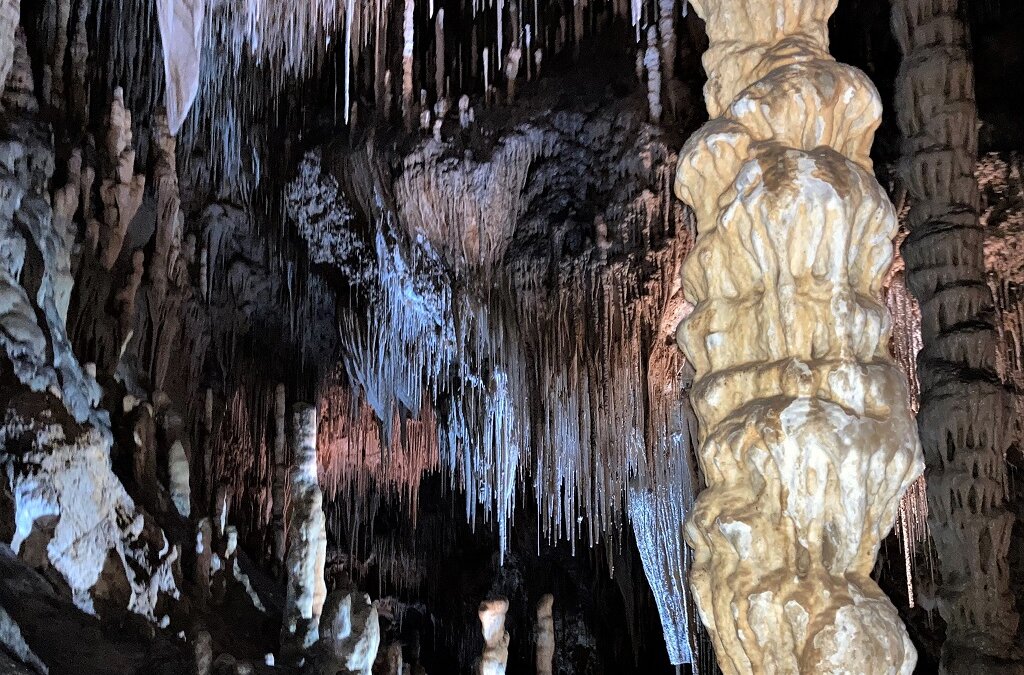
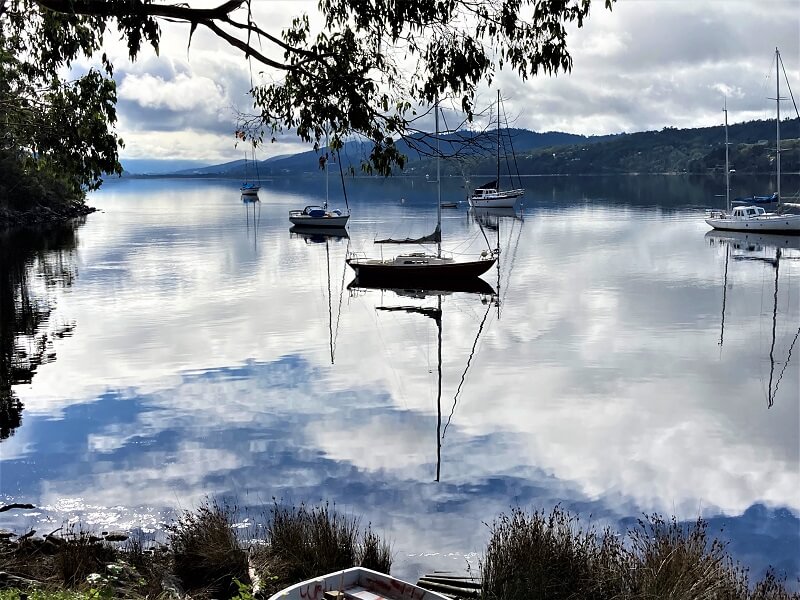
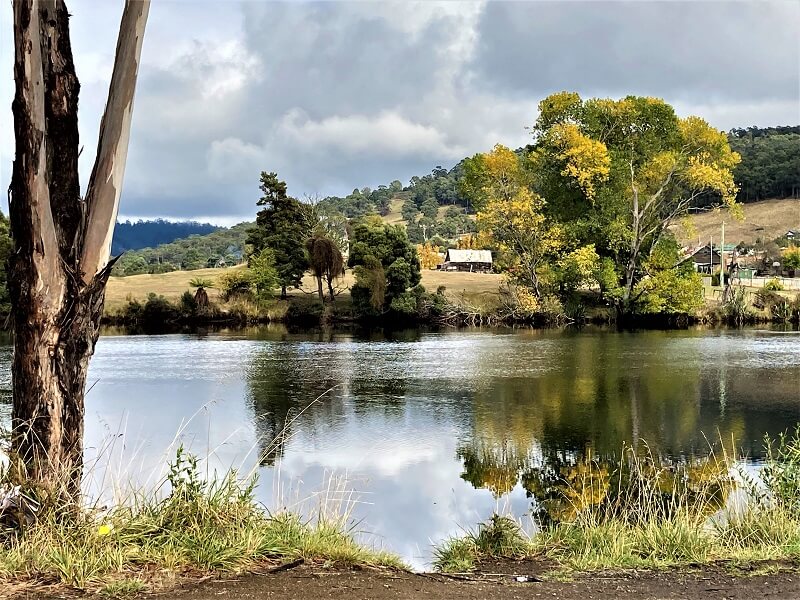
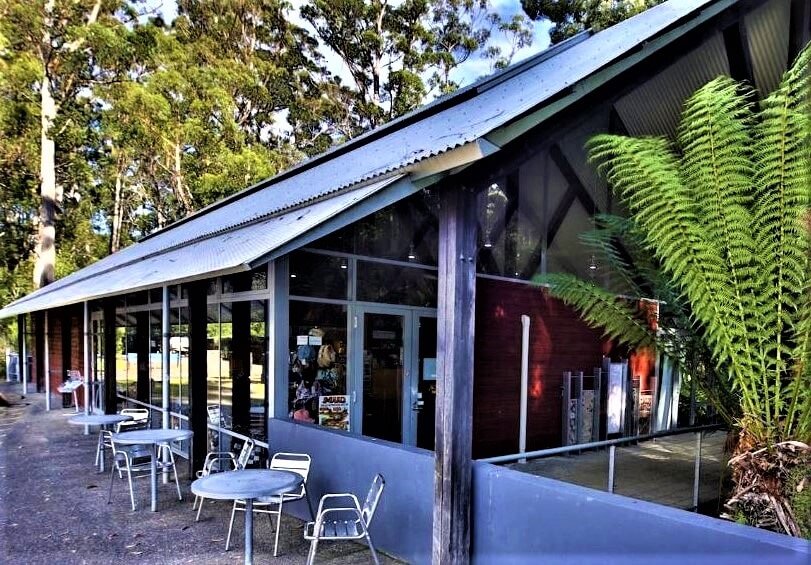
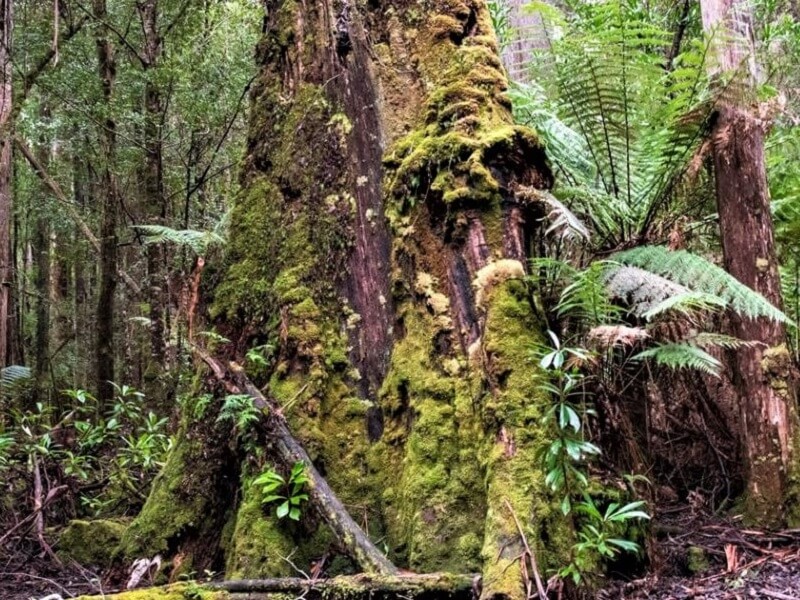
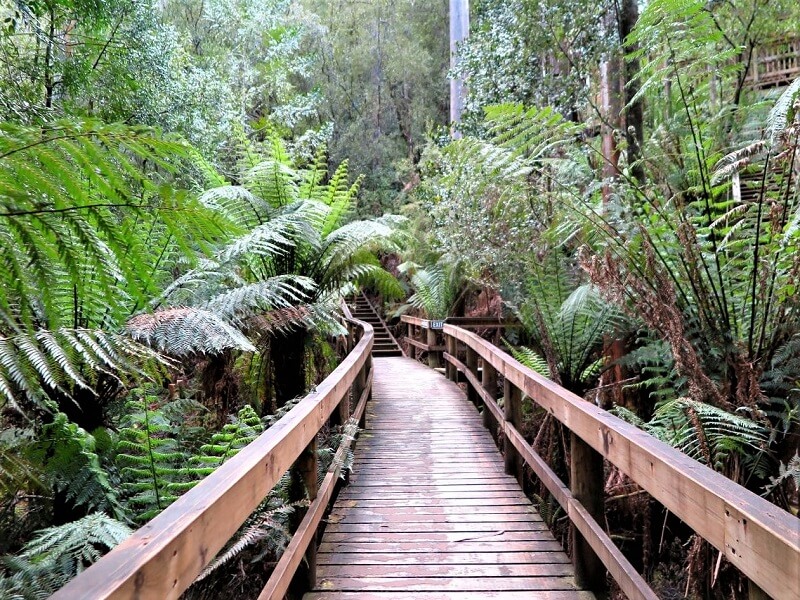
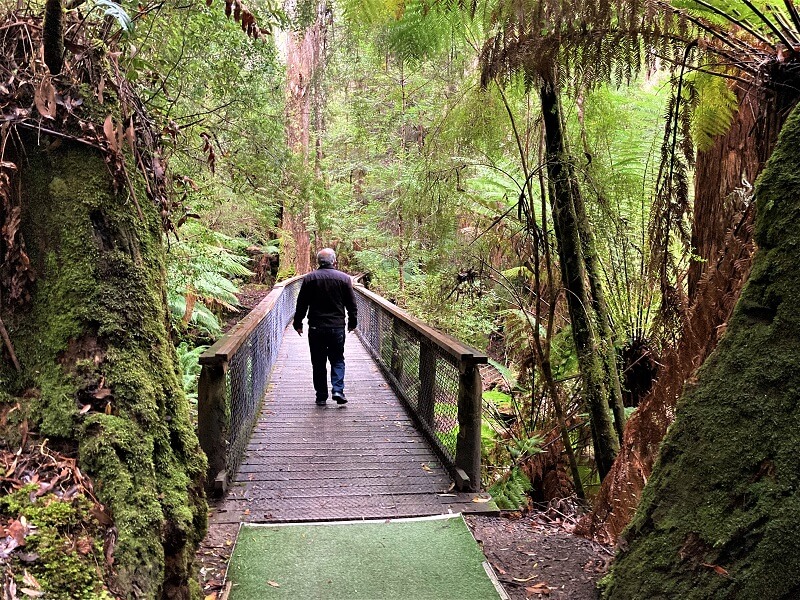
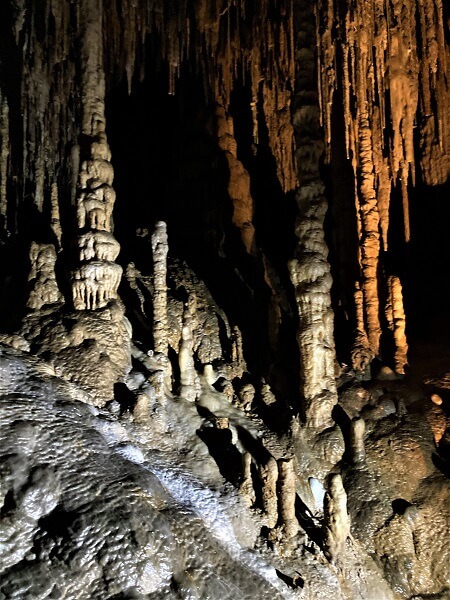
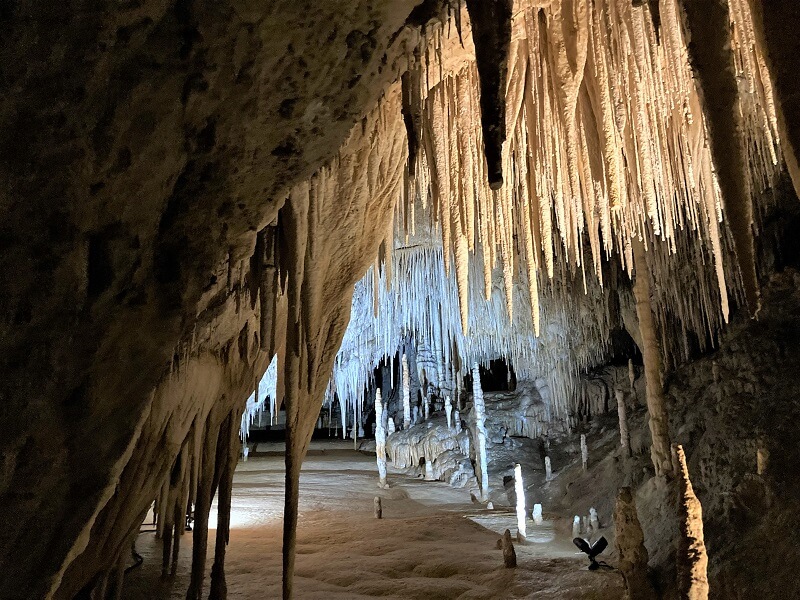
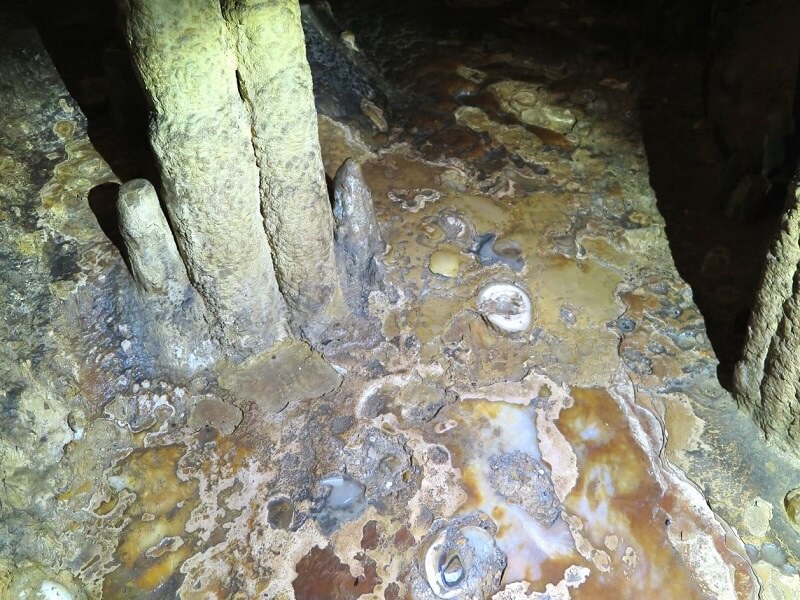
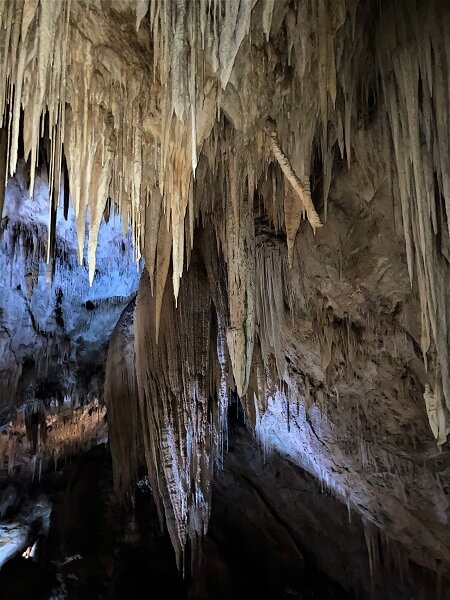
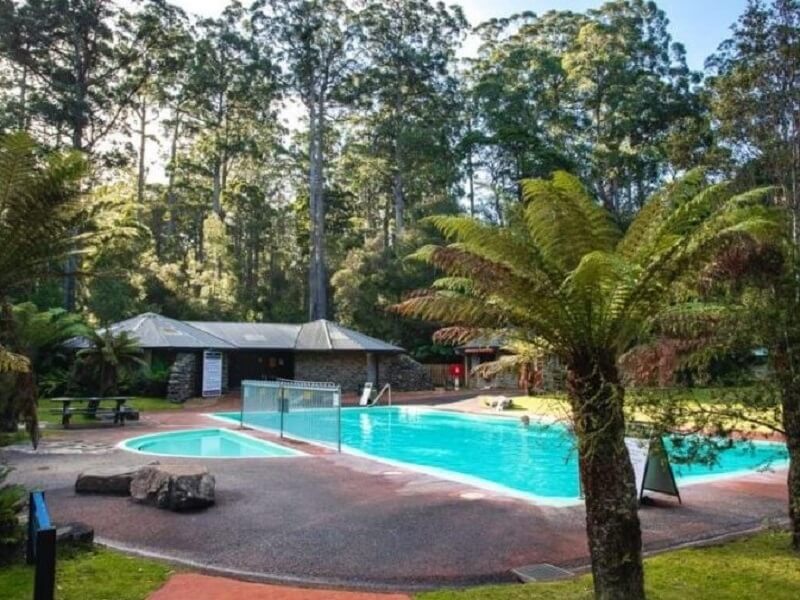
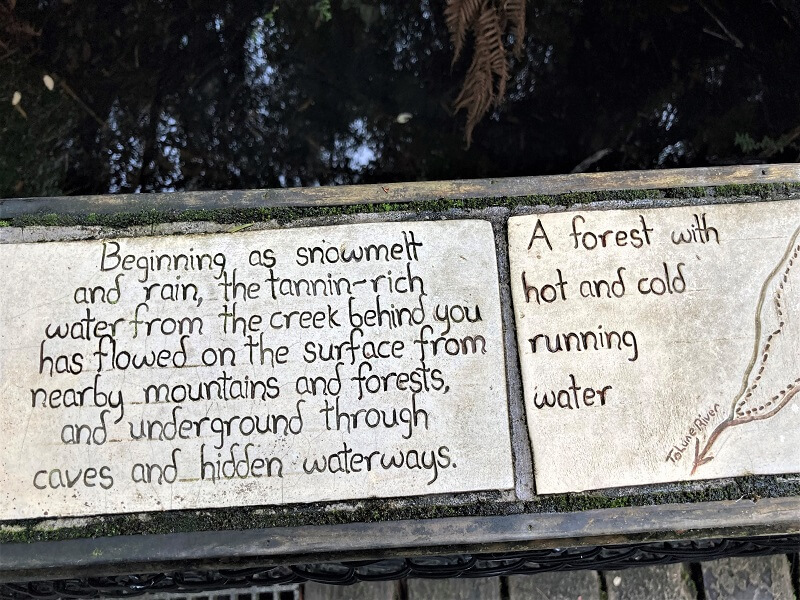

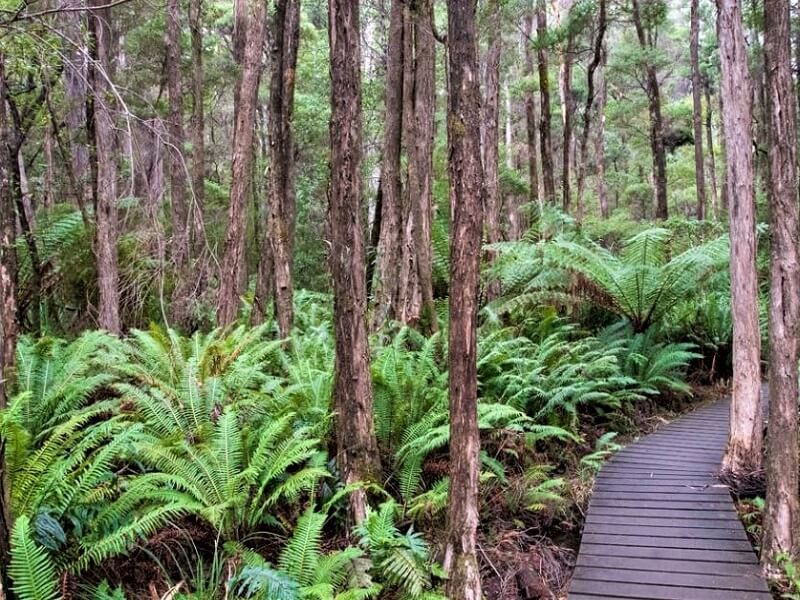
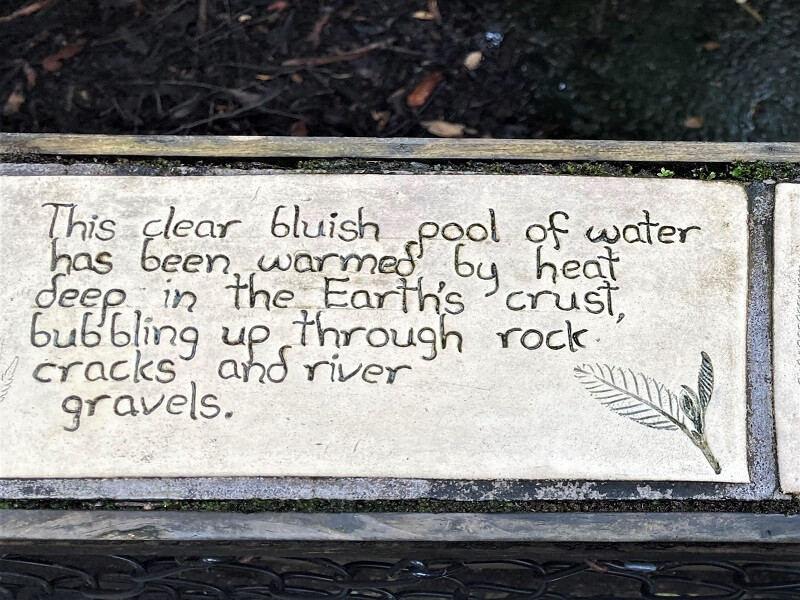
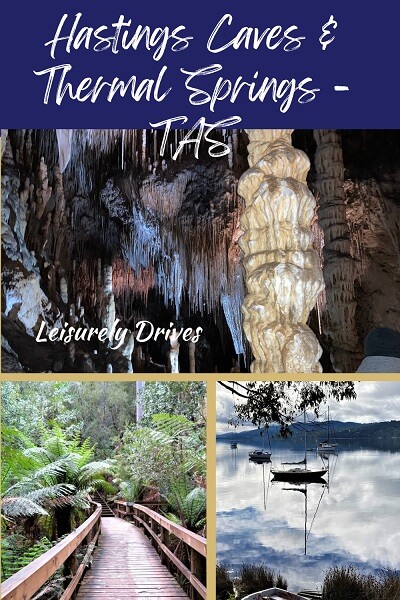
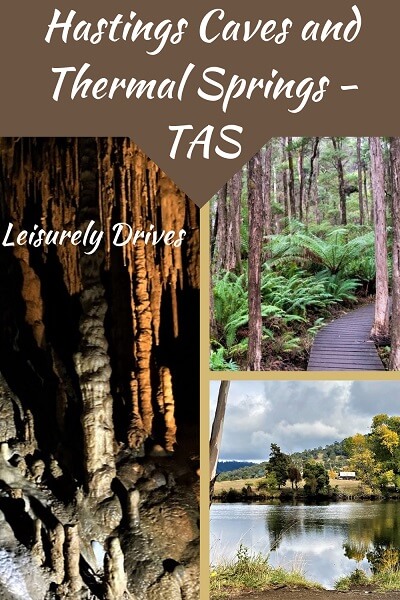
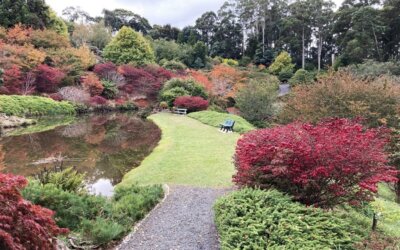
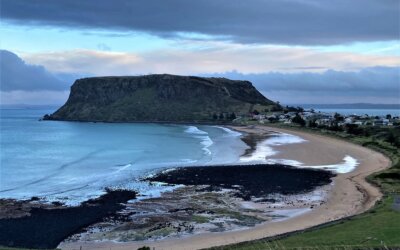
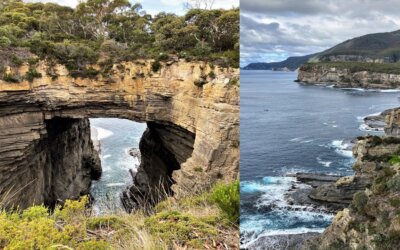
Caves are absolutely amazing to me! These look incredible and definitely seem worth it during a trip to Tasmania.
We definitely have Tasmania on our travel wish list. The Hastings Caves and Thermal Springs sound like the kind of place we want to visit when we get to the Hobart area. The scenery is simply stunning. Great to get detailed instructions on how to get there. I will be careful about what kind of car we rent! And be prepared for the number of stairs we will walk. I will need the thermal springs after that workout.
Isn’t it amazing that there can be a whole other world under our feet? I’m somewhat familiar with karst country because we recently visited Kentucky and Mammoth Caves National Park. There are lots of sinkholes in the area too. Exploring the cool temperature caves is refreshing when it’s warm outside. Strange that there’s such a temperature difference!
Thanks for sharing, it does seem like there are so many things to do here. I love places with lots of photo opps so they will would be great for me. I haven’t been to Tasmania yet but it is on my bucket list. I have saved this on Pinterest for when I do get the opportunity to go I can make sure to stop by.
Never heard about this cave before, but since Tasmania is on my bucket list, I’m definitely adding it to my itinerary. Such a beautiful cave and the surrounding area looks lovely too. Thanks for sharing.
Thermal Springs and Caves together sounds like a perfect day!
Ha! When I first read “mites” I was thinking bugs, which I wouldn’t want to see, but I’d love to visit these caverns to see all of the formations. They’re a fun place to head when it’s warm, I bet because 9°C is probably refreshing (yet chilly!) when it’s hot outside. It looks like such a lovely natural area to visit!
I really hope to be able to visit Tasmania one day. It is currently very far away and I have been seeing lots of nice nature featured documentaries about it. How fantastic that this cave full of stalactites and stalagmites is open to the public to visit too. Thanks for the blog post!
I am so pulled to this beautiful location. I have been caving in India, but that was totally a raw, adventure stuff. This experience is a curated and more organised one. I never remember the mites and tites, but reading that old wisecrack is surely going to help me recall on what is on the ground and what is on the roof. These natural formations are remarkable, I must say. I would also love to walk around the rainforest. I really hope to see the platypus, if the universe wills on that short trip to Hastings Caves and Thermal Springs.
Stalactites and stalagmites always amaze me, and so are the ones in Hastings Caves. You are right when saying what we see in person doesn’t always get picked up by our camera lenses. Too bad. The boardwalk you took on the way to the cave entrance is an adventure in itself. Big and tall ferns reminded me of tropical forests.
Wow! This place is incredible! The blackout seems like such a thrilling experience 🙂
Such amazing diversity in Tassie, hope to visit very soon!
Hastings Cave State Reserve seems like a great place for a day trip, there are plenty of things to do there. I like that there is a 5 kilometer walk to the caves, giving you a chance to explore the local landscape as well. The boardwalk makes it easy to walk too. I have visited karst caves before, and they are always so impressive. The stalactites and stalagmites formations are spectacular.
Hastings Caves will undoubtedly be on my itinerary if I ever travel to Tasmania. Discovering the stalactites, stalagmites, and helictites while exploring the cave looks fascinating. It also appears to be relaxing to take a plunge in the thermal pool and springs.
I love exploring caves like this and have done so in different parts of the world. The most notable have been Luray Caverns in Virginia, USA and Thien Canh Son Cave near Bai Tu Long Bay in Vietnam. The greenery near that boardwalk on the way to Hastings Caves looks gorgeous – great photos! Xx Sara
Before reading about it, I was unaware of Hastings Cave. However, after seeing pictures, I am amazed at its beauty and would definitely consider visiting it during a trip to Tasmania. Additionally, the thermal pool seems like a delightful way to further enjoy the surrounding area.
This looks epic! Always feel like Lara Croft when I get to go in a cave so definitely saving this one for later… love the fact you can take a dip in the thermal springs too. Thanks for sharing!
What a magical place! And you captured it beautifully. Not just the caves but also the vegetation in the surrounding area. It sounds like a physically demanding treck …….. but so worth it!
There is so much natural beauty in your part of the world. I like the boardwalk. This would be my preferred activity. I’m not sure if I would be game for the cave walk. I love thermal springs and I would definitely pick this. I guess having less density of population also helps to preserve these pristine places.